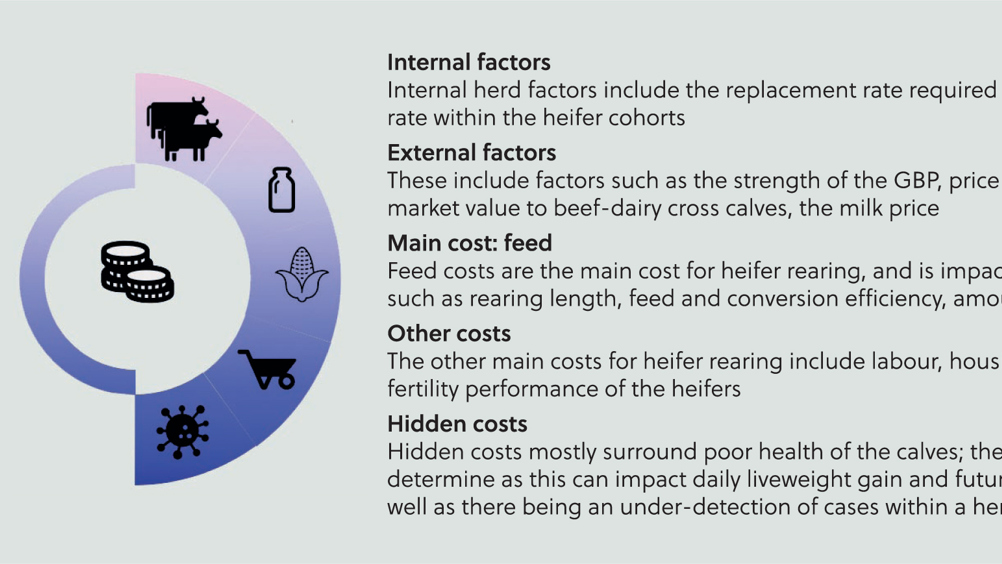References
Economics of heifer rearing on dairy farms

Abstract
Heifer rearing is a fundamental part of the dairy industry, which represents a significant economic investment by the farmer into the future of the herd, with studies reporting that it contributes to approximately 20% of the overall expenditure of a dairy farm; the target is less than 10%. Research from the UK reported the mean rearing cost of a heifer was approximately £1900, with large variation between farms. The payback time for these costs has been reported to be around second lactation. It is important for farmers and veterinary surgeons to consider the economics of heifer rearing, as well as the health, welfare and longevity of heifers when implementing a rearing plan.
Heifer rearing is a fundamental part of the dairy industry. It represents a significant economic investment by the farmer into the future of the herd, with studies reporting that it contributes to approximately 20% of the overall expenditure of a dairy farm (Gabler et al, 2000). The target that has been quoted for this figure is 10% (Frazer LLP, 2018), with the herd replacement costs calculated as the annual expenses to obtain calving heifers minus the revenues from culled cows, divided by the amount of milk sold. The herd replacement cost is highly dependent upon the rearing costs of and culling rate within the herd (Frazer LLP, 2018). An example is shown in Figure 1.
Research from 101 farms across Great Britain reported that the cost of rearing a heifer from birth to first calving varied significantly between farms, from £505.10 to £2147.50 per heifer reared (Boulton et al, 2017). This variability indicates that there are significant system differences, as well as potential inefficiencies within those systems, which have potential welfare, health and economic impacts. It is worth noting that the impact of external factors, such as the rise of inflation, have had a significant impact on heifer rearing costs, resulting in the cost of rearing a heifer in 2023 being considerably higher than in 2015.
Register now to continue reading
Thank you for visiting UK-VET Companion Animal and reading some of our peer-reviewed content for veterinary professionals. To continue reading this article, please register today.

